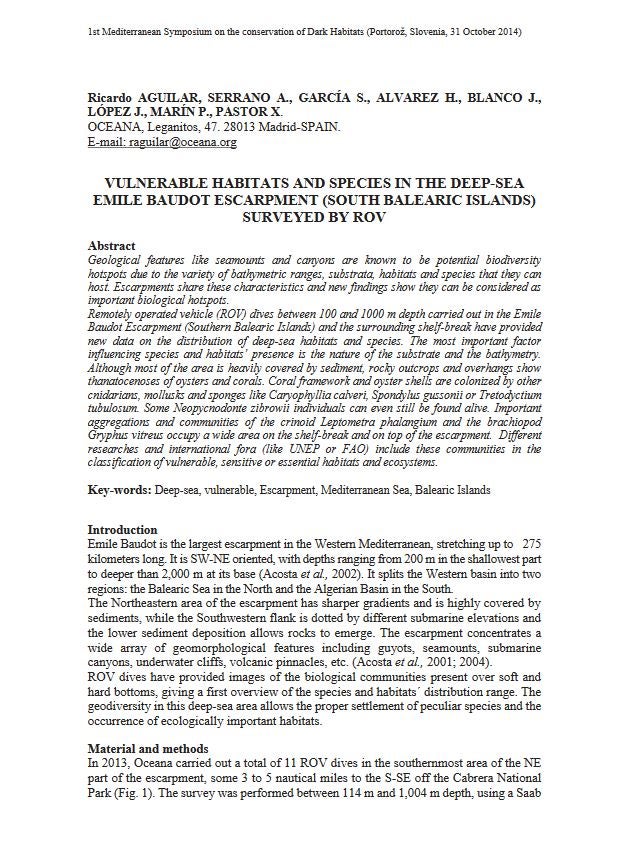Report | October 31, 2014
Vulnerable habitats and species in the deep-sea Emile Baudot escarpment (South Balearic Islands) surveyed by ROV
Abstract
Geological features like seamounts and canyons are known to be potential biodiversity hotspots due to the variety of bathymetric ranges, substrata, habitats and species that they can host. Escarpments share these characteristics and new findings show they can be considered as important biological hotspots. Remotely operated vehicle (ROV) dives between 100 and 1000 m depth carried out in the Emile Baudot Escarpment (Southern Balearic Islands) and the surrounding shelf-break have provided new data on the distribution of deep-sea habitats and species. The most important factor influencing species and habitats’ presence is the nature of the substrate and the bathymetry. Although most of the area is heavily covered by sediment, rocky outcrops and overhangs show thanatocenoses of oysters and corals. Coral framework and oyster shells are colonized by other cnidarians, mollusks and sponges like Caryophyllia calveri, Spondylus gussonii or Tretodyctium tubulosum. Some Neopycnodonte zibrowii individuals can even still be found alive. Important aggregations and communities of the crinoid Leptometra phalangium and the brachiopod Gryphus vitreus occupy a wide area on the shelf-break and on top of the escarpment. Different researches and international fora (like UNEP or FAO) include these communities in the classification of vulnerable, sensitive or essential habitats and ecosystems.


